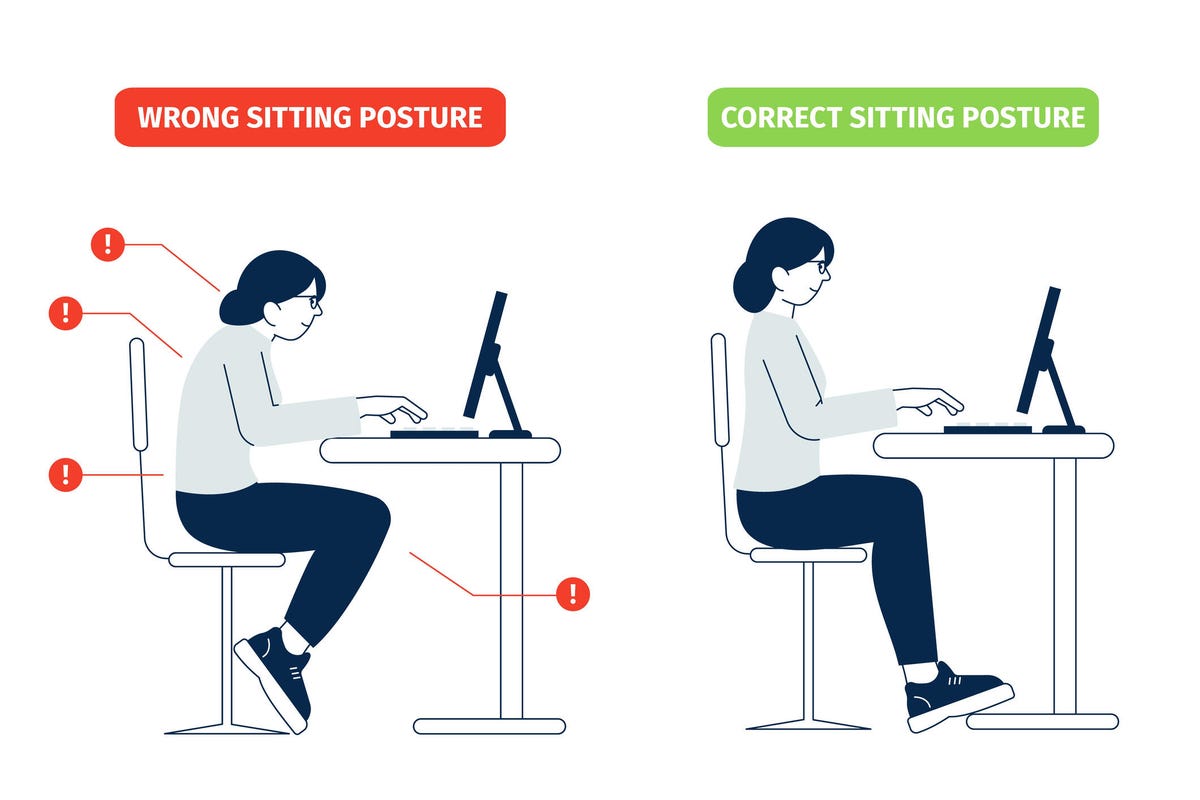Fitness
This One Daily Habit Is Wrecking Your Health. Here's What to Do Instead

Most people care about staying healthy — it’s getting motivated that’s the problem. When you’re dreading exercise, it can be hard to find any reason compelling enough to get you up out of your seat and push you to get moving.
As it turns out, the getting up is as important as the exercise itself. And that’s because there’s an insidious health hazard that’s built in to all of our lives. Are you ready to hear it? You’re not going to want to sit down for this.
The big issue here is, in fact, sitting too much. As the world modernizes and digitizes, we get to spend a lot more time sitting than in days of yore. The problem, an increasing mountain of studies reveal, is that sitting takes a toll on our health. While calling it the new smoking might be too extreme, it does have a negative effect on a number of important health factors. Let’s take a closer look. (For more health tips, explore these ways to hack your happiness and three ways to find your blood type.)
How sitting affects your body
Sitting correlates to a higher likelihood of chronic diseases.
Lots of sitting means you have what experts call a sedentary lifestyle. And that affects your health in serious ways. Research shows that people who sit a lot (hours at a time) have a greater likelihood of:
In other words, the more you sit, the more likely you are to deal with some of the biggest obstacles to both longevity and quality of life. Constantly staying in the same position overuses some muscles and underuses others, which can cause cramps, strains or weakness over time. It also slows down metabolism and blood flow, making it harder for the body to regulate your blood sugar, blood pressure and more.

That means that even if you never get a serious diagnosis, sitting can make you feel physically worse day in and day out. What’s more, sitting too much can negatively impact your mental state and even brain health, too. As reported by Yale Medicine, sitting has been linked to depression and dementia.
To drive this all home, several studies have found that too much sitting is associated with a higher overall mortality, or death from any cause. This might be because of the direct health impacts of sitting, or it might be because sedentary lifestyles are associated with other behaviors that impact health.
Long story short, if you look at the increasing body of research about our seated lifestyles, it’s clear that sitting too much is doing us no favors.
Four ways to reduce the effects of sitting all day
Maybe you have no choice but to sit a lot. Whether you work a desk job or have a disability that makes it necessary to sit frequently, you should know that you have options. The steps you take (quite literally) can make a dramatic difference in the sitting health risks you face.
1. Sit less (if you can)
To start, if you’re physically able, try to sit less overall. This might mean elevating your laptop or monitor so you can stand while you work or choosing to listen to a podcast and go for a walk instead of watching an episode of a TV show.
Evaluate where you spend the most time sitting, whether that’s at work, at home or elsewhere. Then, look for ways to get on your feet more. If you tend to be on the couch when you’re at home, consider taking up an active hobby or making more involved meals — that added time on your feet can do wonders.
2. Break up your sitting
When you do sit, break up long stretches of sitting as frequently as you can. According to one study’s findings, you should aim to get up every 30 minutes and move your body for three minutes. Even taking just 15 steps can be enough to reset your body and alleviate some of the stresses that come with sitting. However, the more movement you incorporate into your day, the better.
It might be helpful to set a timer for 30 minutes whenever you’re at your desk, as Dr. Erik Nastlünd, the Karolinska Institute professor who led the study, told the New York Times. Not only will this serve as a reminder to get up, but it can also help you focus. Research places the amount of time an individual can focus on one task somewhere between 10 and 52 minutes. By taking breaks every half-hour, you’re hitting that sweet spot. Knowing you have a timer running can motivate you to stay on task so you get more done during any sitting sessions, too.
To avoid sitting too much, it’s helpful to have things to do to encourage yourself to get up. If you’re able, you might:
- Make it a habit to walk while you take phone calls
- Use a smaller water glass/bottle and coffee cup so you have to get up for refills more often
- Take the stairs instead of the elevator
- If you take the train or the bus, choose to stand (you’ll free up a seat for someone who might need it)
- Use your lunch break to talk a walk (you’ll get the added benefit of vitamin D)
- Walk from one end of your house/apartment to the other between every episode of TV

To avoid sitting too much, it’s helpful to have things to do to encourage yourself to get up.
3. Exercise regularly
Make it a point to get moving every week day for at least 30 minutes. Regular exercise can help to counteract the health risks of sitting, although it won’t undo them completely. Officially, the US Department of Health and Human Services recommends at least 150 minutes of moderate aerobic exercise per week, or 75 minutes of vigorous aerobic exercise; plus two or more days of strength exercises.
4. Sit the right way
Finally, when you do sit, make sure your seated position doesn’t put undue stress on your body. The best sitting position is one that:
- Lets you rest your feet flat on the floor with your knees bent 90 degrees
- Keeps your neck straight (you might need to elevate your computer monitor for this)
- Helps your shoulders relax (you might want armrests on your chair, for example)
- Lets you type or write with your elbows at a 90-degree angle and your wrists supported
Some people may also benefit from added support for their lumbar spine (basically, your lower back). You can buy a pillow to put in your chair to help maintain the natural curvature of your spine.

When you do sit, make sure you have correct posture.
Ultimately, how much you sit directly impacts your overall health. This isn’t to say you can never enjoy a relaxed day lounging at home. But it’s worth evaluating how often you sit and for how long, so you can take measures to ensure you’re not sitting too much.
For more wellness advice, check out the seven best workouts for absolute beginners and our guide to getting a great workout at home. Plus, here are the five absolute best workouts for heart health.







